Supercharged H2 goes sports-touring for 2018
Second generation powerplant in SX Sports Touring version
Kawasaki have unveiled the sports-touring orientated Ninja H2 SX at EICMA, which despite similarities to the original offering, actually features a heavily revised powerplant, with a huge number of new or redesigned components, including an all new, lighter and more compact exhaust system, new trellis frame, Kawasaki’s first LED cornering lights on the SE version as well as a TFT full colour display, also on the SE.
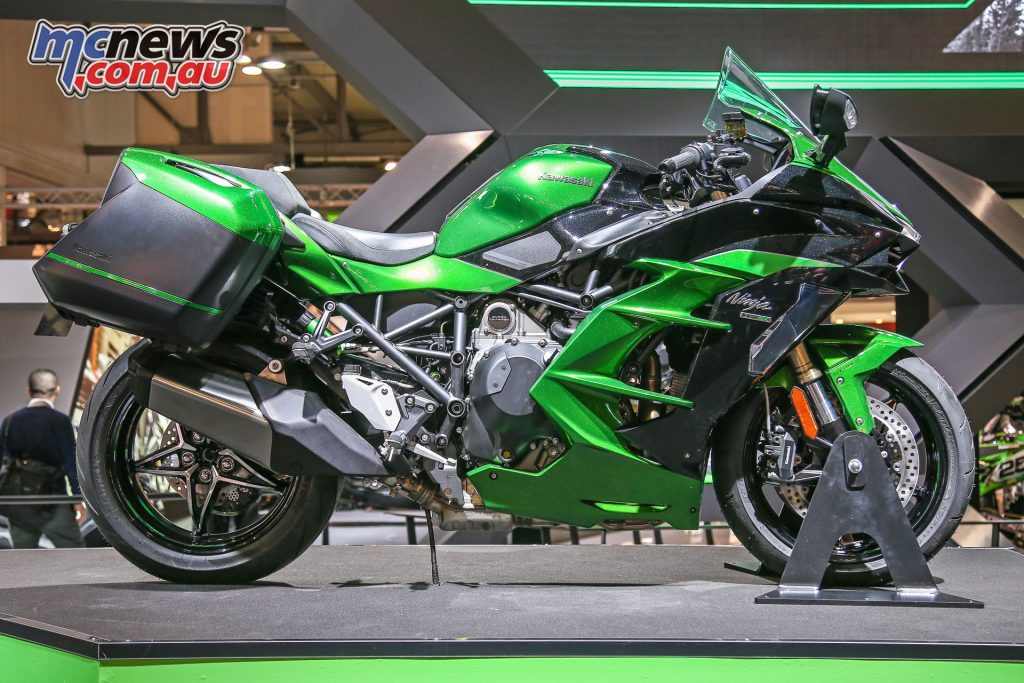
Also standard on the Ninja H2 SX SE models are Kawasaki Launch Control Mode Kawasaki Quick Shifter, coming in a special Emerald Blazed Green / Metallic Diablo Black colour scheme. The regular H2 SX comes in a Metallic Carbon Gray / Metallic Matte Carbon Gray colour scheme.
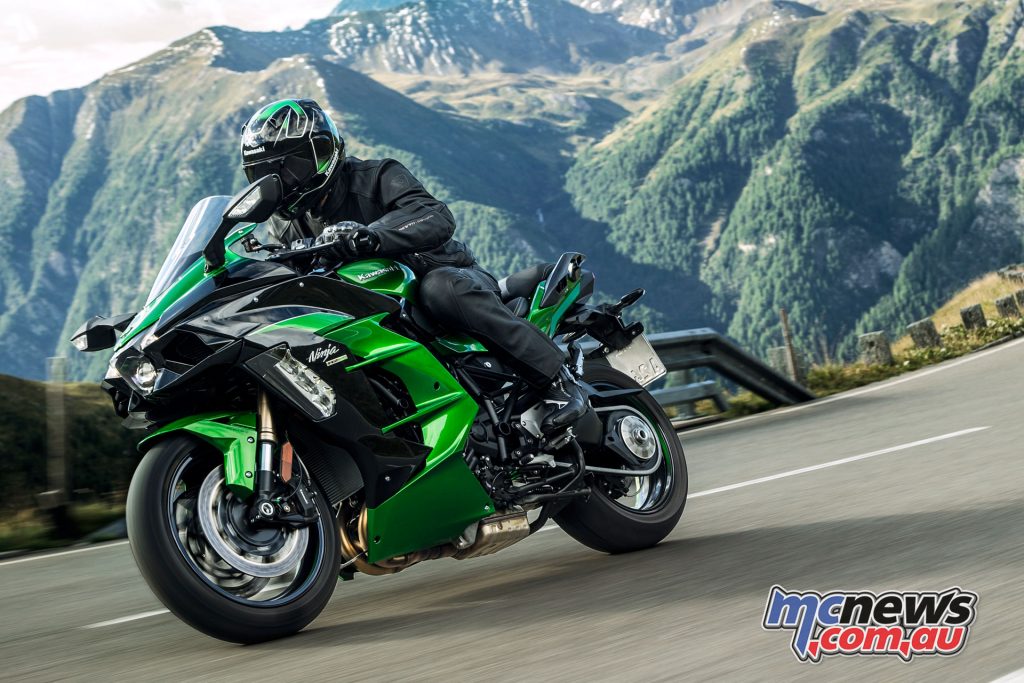
Redesigned supercharged engine
The H2 SX’s supercharged powerplant delivers a maximum power of 200 PS and while the engine looks the same, it is essentially new. The impeller and intake system were completely redesigned; the pistons, cylinder head, cylinder, crankshaft and camshafts are new, throttle bodies are new, exhaust system is new, and gear ratios revised.
One change for the H2 SX powerplant is the increased compression ratio, for better thermal effeciency and less heat for the rider. Changes to the engine itself include an all new impeller for the supercharger, with a revised shape and optimised blades, taking into account the lower airflow of the new engine. The supercharger itself is driven by a planetary gear train off the crankshaft, and the gear train increases impeller speed to 9.2x the crank speed.
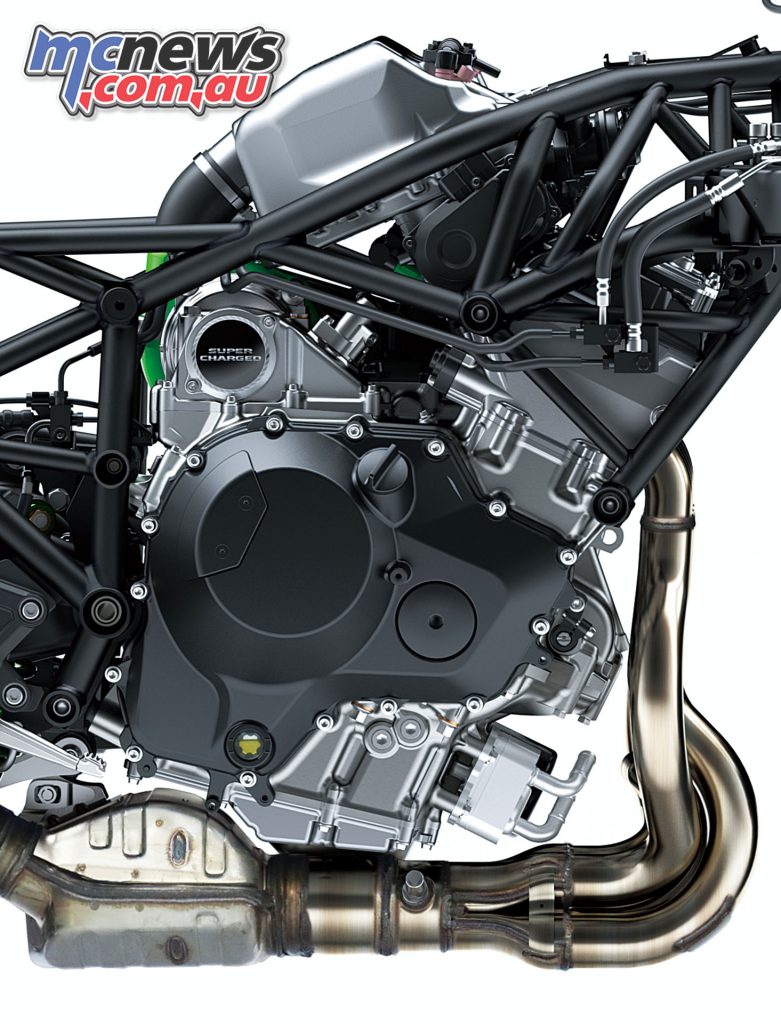
The intake chamber is also shaped for high effeciency and reduced by 1 litre over the H2 chamber, with the chamber itself a aluminium die-cast to save 500g, with a new diffuser. Uneven intake funnel lengths are designed for optimal low to mid-range performance, with the intake funnel nets on the H2 replaced with a single set at the end of the diffuser.
A smaller diameter throttle valve (40mm) being used also optimises airflow and fuel effeciency, with cam profiles with shorter intake and exhaust duration, with shorter overlap, to match the reduced airflow. Compression itself has gone from 8.5:1 (original H2) to 11.2:1 in the new H2 SX.
The pistons feature revised crowns, and are cast to offer better strength in a supercharged engine, while single piston jets are now used and less oil flow is needed allowing 500mL less oil to be used. A noticeable change is the silencer being a 7L item, instead of 10L as seen on the H2, with a reverse taper design and die-cast end-cap.
A versatile engine character as a result of these changes enables relaxed long-distance riding, easy manageability at slow speeds and the exhilarating acceleration that only a supercharged engine can deliver. The Ninja H2 SX’s fuel efficiency represents a significant increase over the supercharged engine of the Ninja H2, and is on par with that of the Z1000SX and Versys 1000.
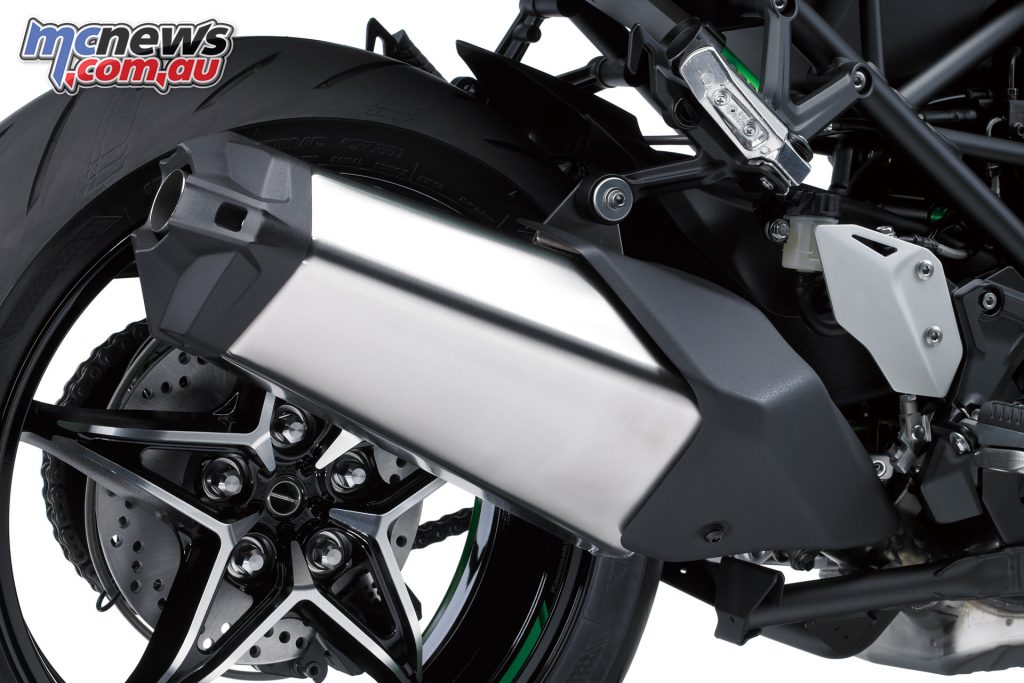
Combined with its 19 litre fuel tank, this gives the Ninja H2 SX a substantial cruising range. The engine also flows less air compared to the Ninja H2, meaning quieter operation and a lighter exhaust system – less air in means less air out, so a smaller exhaust volume to be quietened. In total, the new engine, including the exhaust system, is approximately 3 kg lighter.
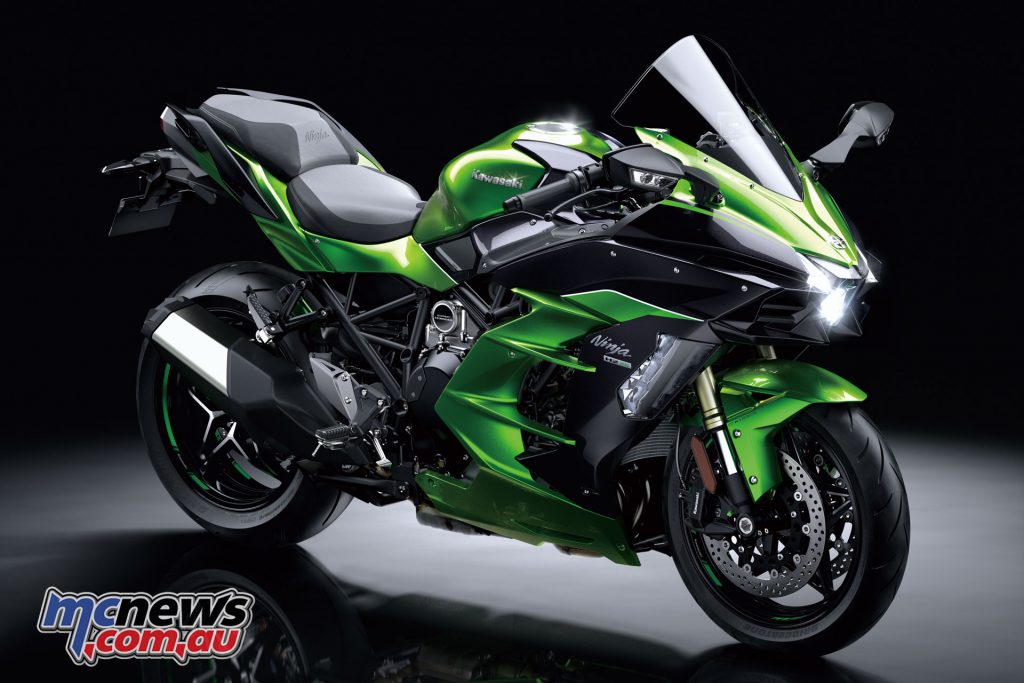
Chassis – New trellis frame
The Ninja H2 SX features a redesigned trellis frame able to accommodate a passenger and luggage, with a 195kg payload. The increased rigidity and longer wheelbase deliver the stability for riding at highway speed with panniers, while a 30° steering angle facilitates low-speed manoeuvres.
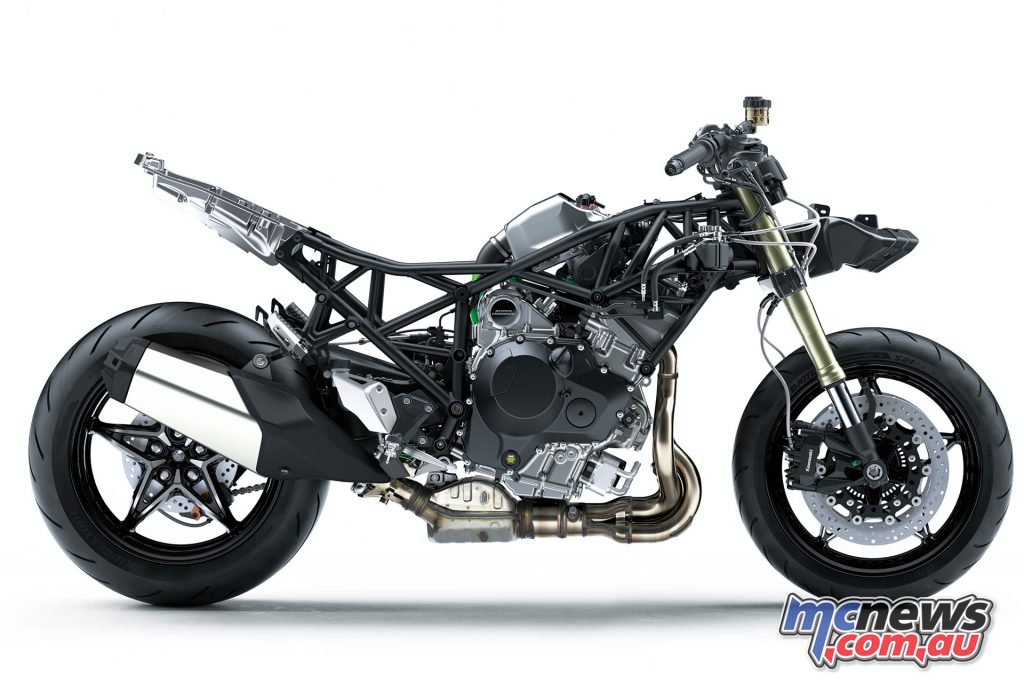
The bodywork strategically shields the rider without being too large, balancing rider comfort and aerodynamics. On the SE model, the taller windscreen further protects the rider from windblast, offering even greater touring comfort.
Both front and rear suspension are fully adjustable, allowing riders to make adjustments to suit riding style and conditions. The 43mm inverted fork is fully adjustable for compression and rebound damping and preload.
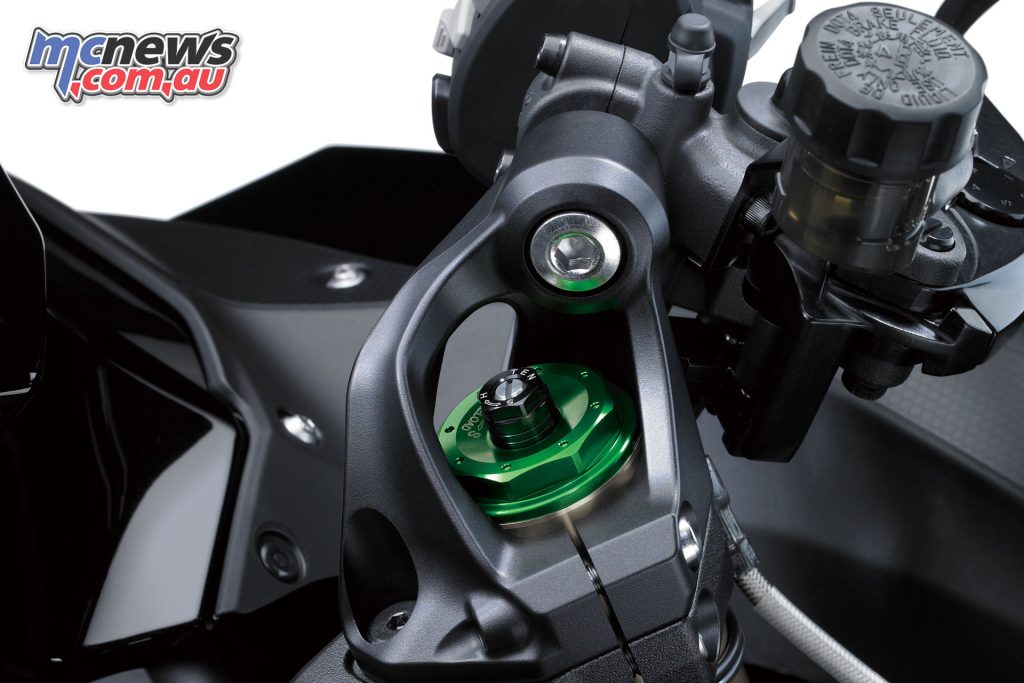
The KYB fully adjustable mono-shock rear suspension is gas-charged with a piggy-back reservoir, ensuring stable damping performance. The rear shock can be adjusted for compression damping (high/low-speed), rebound damping and preload. The top of the rear shock mounts to the swingarm mounting plate, The bottom of the rear shock is mounted via revised New Uni-Trak linkage, while a remote rear preload adjuster greatly facilitates making changes to accommodate a passenger and/or luggage.
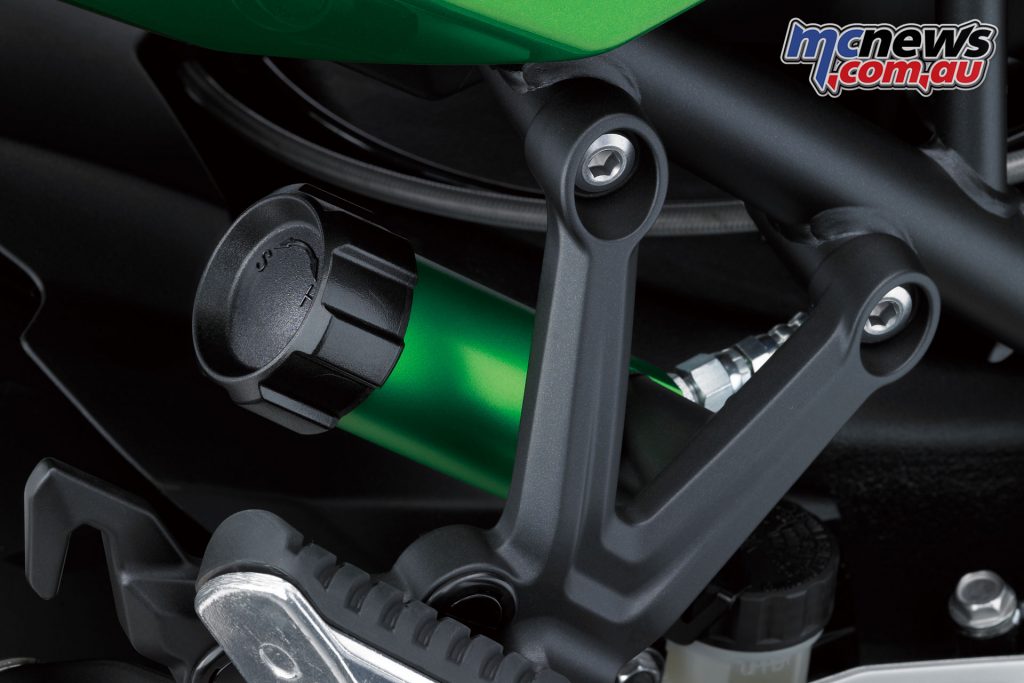
Brakes are 320mm front disc, with radial mount calipers and a radial pump master cylinder, with the SE version including braided brake lines. On the rear a 250mm disc is mated to a two-piston caliper, while KIBS is standard.
Wheels are cast aluminium with a five-spoke star pattern, with the SE model including machining on the spokes and standard rim tape. Screw in aluminium side-facing tyre valves are also used, with a front 120/70 – 17 and rear 190/55 – 17 tyre, with the rear now 10mm thinner than the previous H2.
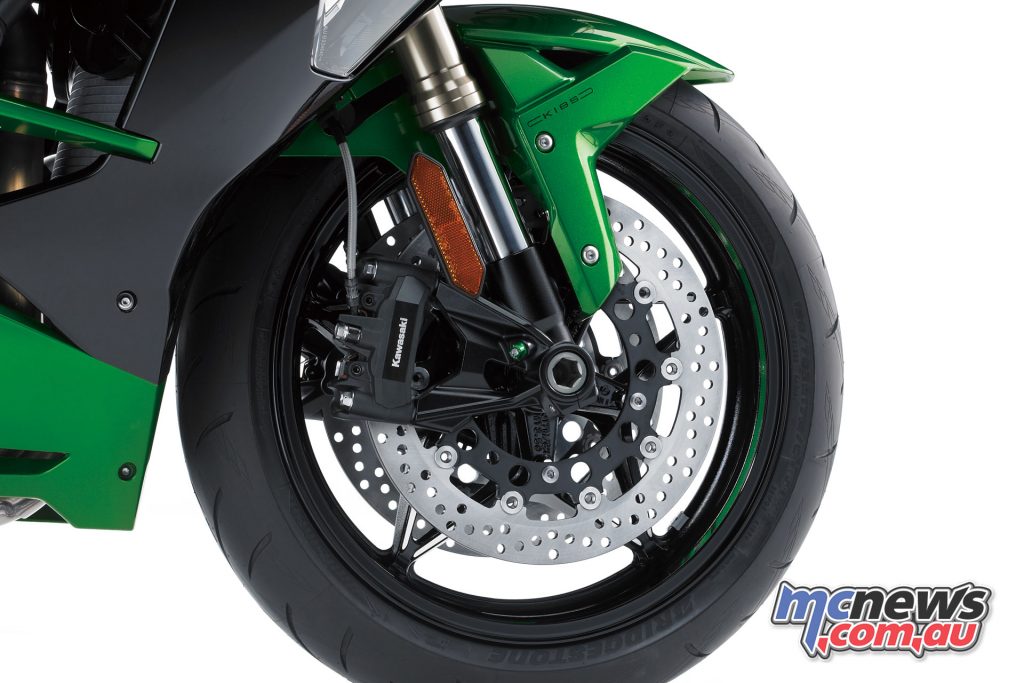
Not as far forward leaning as the ZZR1400 and not as upright as the Z1000SX, the Ninja H2 SX’s riding position offers a more relaxed bend for both the elbows and knees. The position is comfortable for both in-town riding and all-day touring, while still enabling the rider to enjoy sporty riding in the hills.
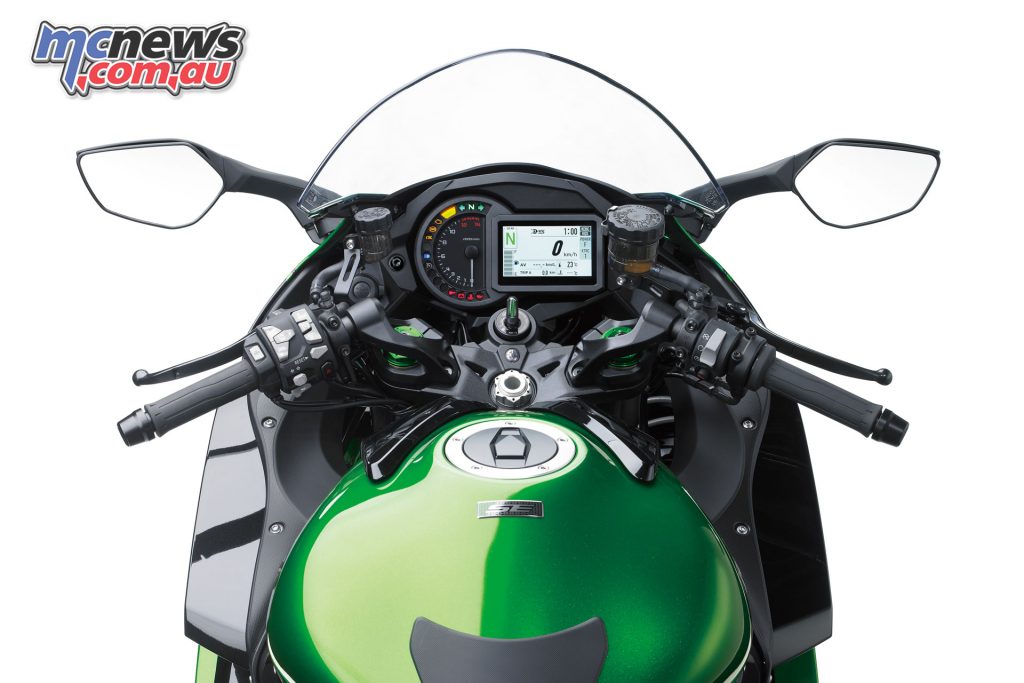
Two seats are available, a Comfort Seat that offers a relaxed knee bend and thicker urethane cushioning, and a Low Seat (15mm lower) that prioritises an easy reach to the ground. The rear seat is wider and flatter than on the Z1000SX and ensures pillion comfort.
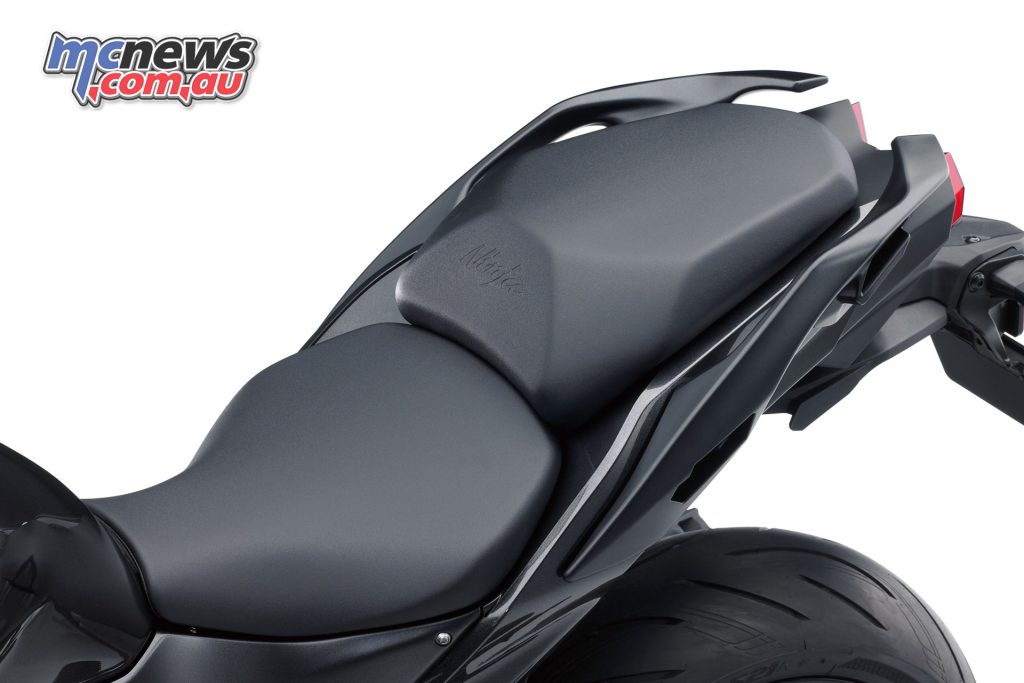
The clean-mount luggage system positions the panniers close to the bike centreline, and ensures the rear of the bike still looks good with the panniers removed. High-speed testing on Germany’s Autobahn has ensured stable operation with panniers.
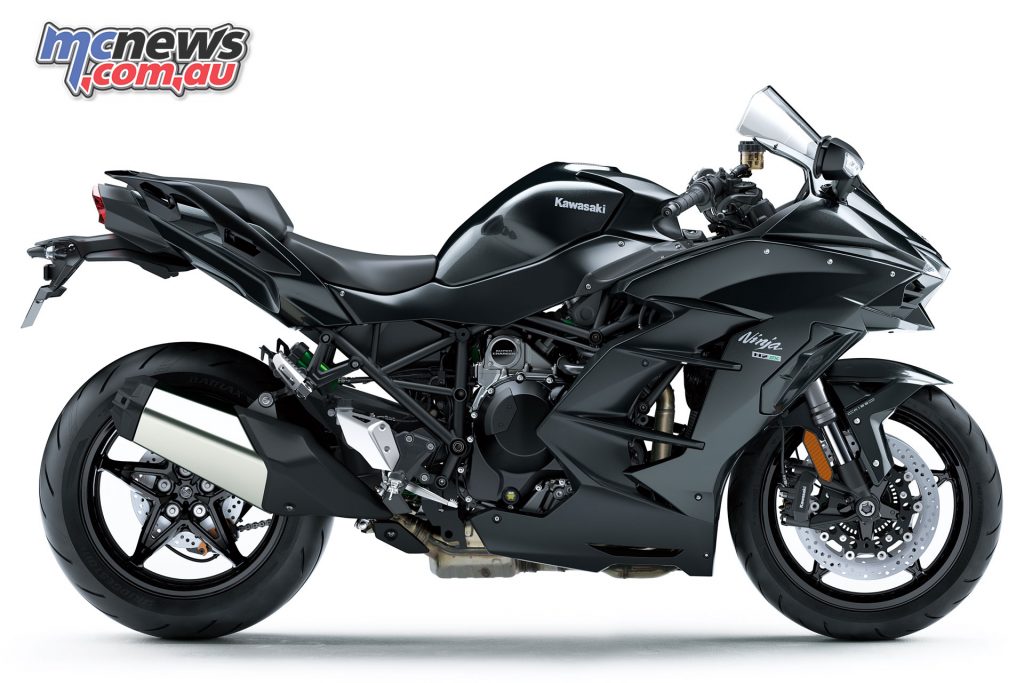
Full electronics package
The analogue-style tachometer is complemented by a full digital LCD screen (STD model), or Kawasaki’s first use of a high-grade full colour TFT LCD screen (SE model). On the SE model, two selectable display modes (Touring or Sport) allow riders to prioritise the information they want to see.
Another first for a Kawasaki Sport Tourer is Kawasaki’s latest cruise control system allows a desired speed to be maintained with the simple press of a button.
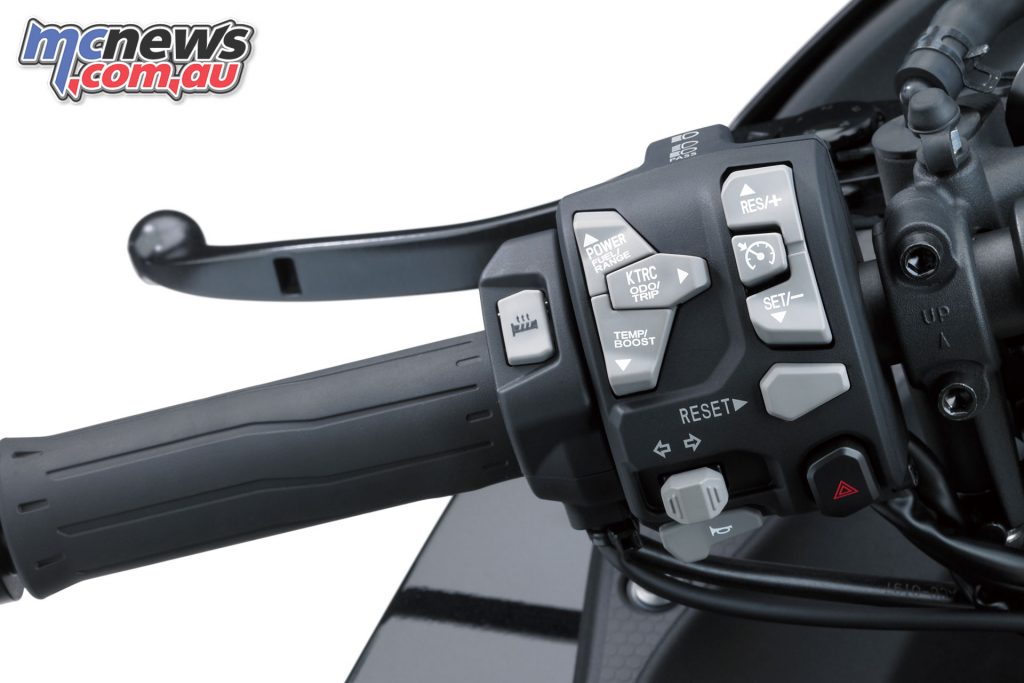
Also featured are Kawasaki’s First LED Cornering Lights (SE only), where each of the three lights, built into each side of the fairing, has a fixed direction and is activated based on lean angle (10°/20°/30°). As the bike leans over, the lamps come on in order, creating a wider path of light in the direction the bike is heading. From the bright headlamp to the all-new taillight, all the lights on the Ninja H2 SX – even the licence plate bulb – are LED.
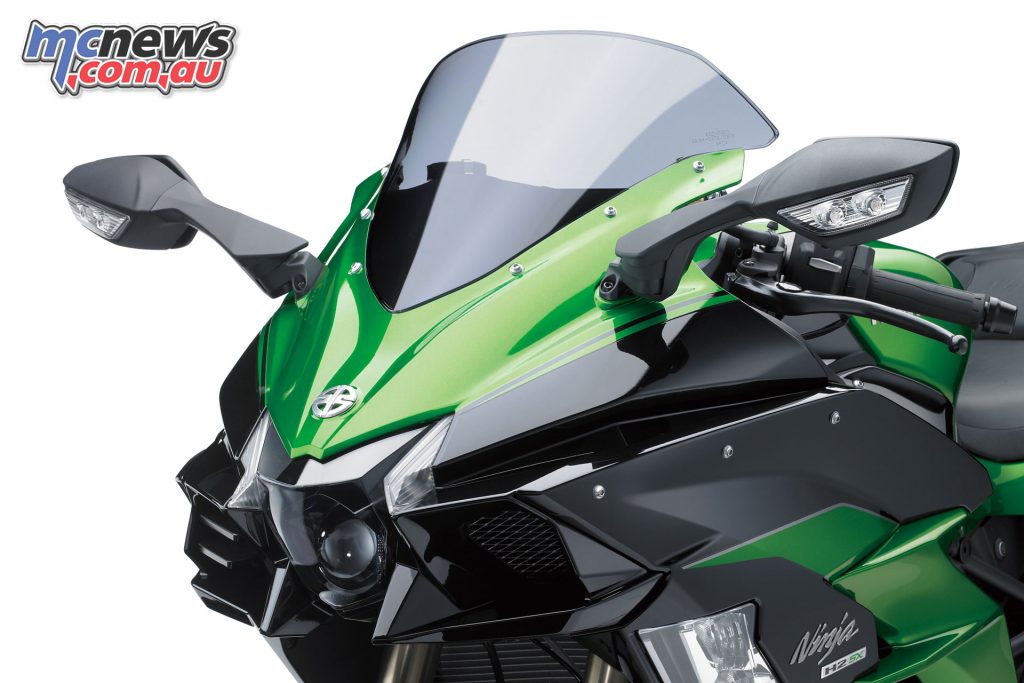
KCMF (Kawasaki Cornering Management Function) is an IMU-equipped total engine and chassis management package using Kawasaki’s advanced modelling software and feedback from a compact Bosch IMU (Inertial Measurement Unit).
KCMF monitors engine and chassis parameters throughout the corner, modulating brake force and engine power to facilitate smooth transition from acceleration to braking and back again, and to assist riders in tracing their intended line through the corner.
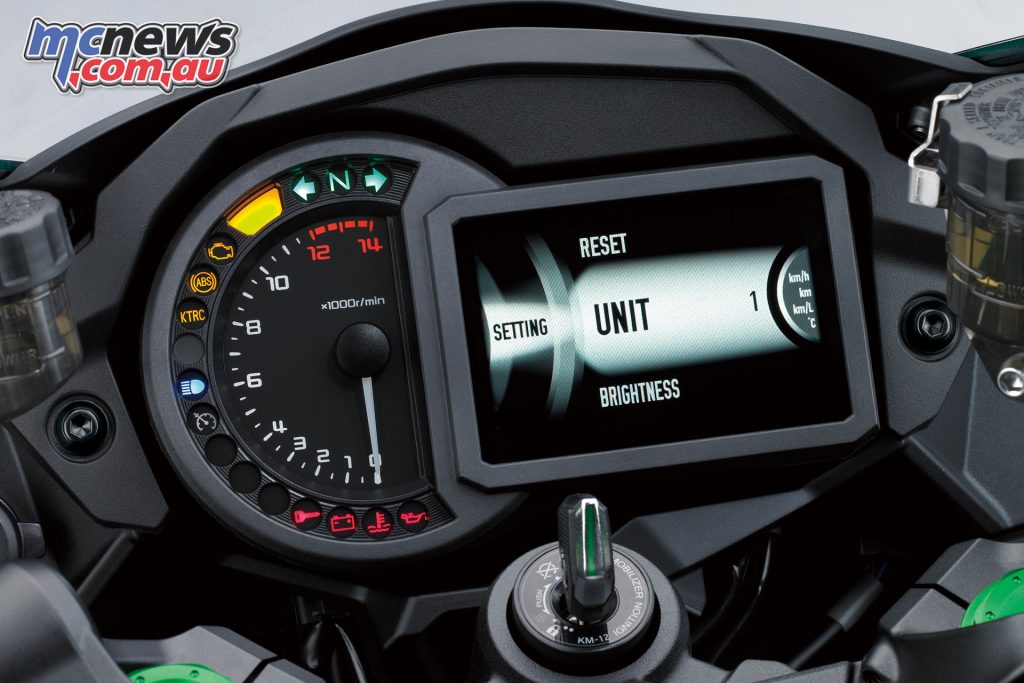
On the Ninja H2 SX, KCMF oversees the following systems:
- KTRC (including traction and wheel lift control) – Three modes cover a wide range of riding conditions. Kawasaki’s advanced modelling software, complemented by feedback from the IMU, delivers precise control.
- KLCM (SE-only feature) – KLCM electronically controls engine output to prevent wheel spin and minimise wheel lift when launching.
- KIBS (including pitching and corner braking control) – Kawasaki’s supersport-grade high-precision brake management system ensures highly efficient braking with minimal intrusion and incorporates corner braking control.
- Kawasaki Engine Brake Control – This system allows riders to set the level of engine braking according to preference.
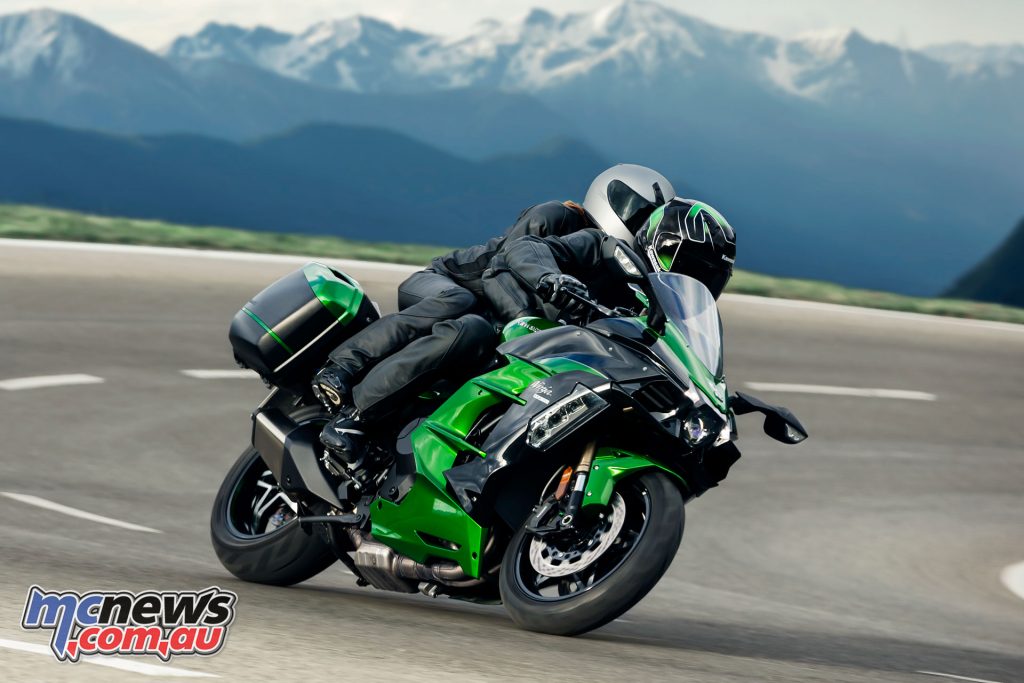
Full, Middle, Low Riders can also set power delivery to suit conditions and/or preference, choosing from Full, Middle, or Low mode. And the SE version features the KQS (Kawasaki Quick Shifter) a dual-direction quick shifter which allows both clutchless upshifts and downshifts. Designed for effective sport riding, street-optimised settings enable operation at rpm above 2500.
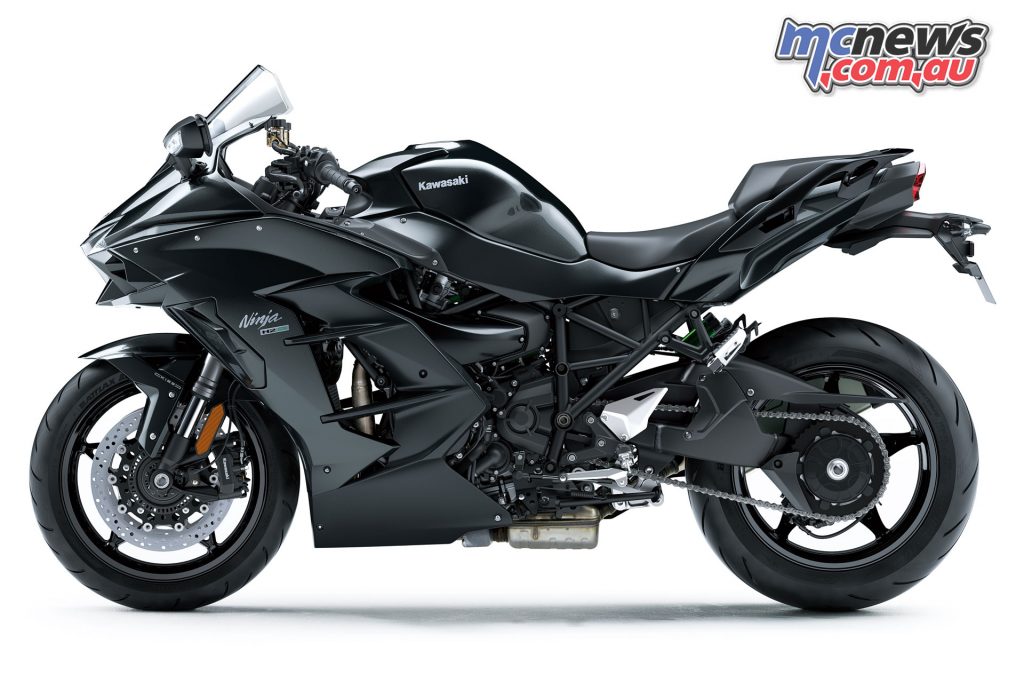
The 2018 Kawasaki Ninja H2 SX is available in the following colours:
- Ninja H2 SX – Metallic Carbon Gray / Metallic Matte Carbon Gray
- Ninja H2 SX SE – Emerald Blazed Green / Metallic Diablo Black
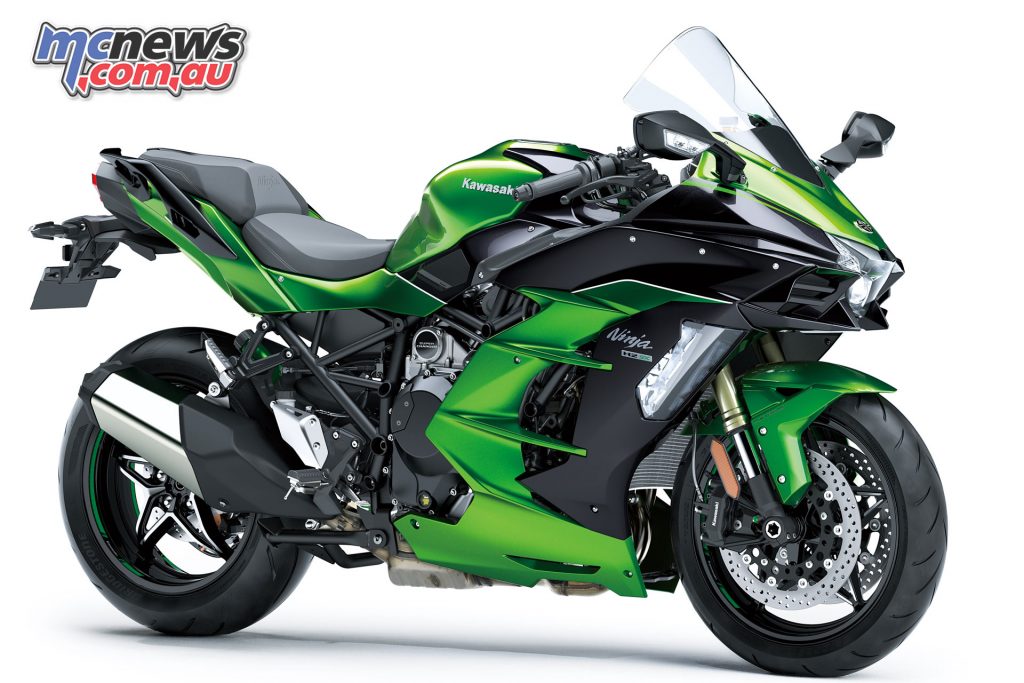
2018 Kawasaki H2 SX (SE) Specifications
- Engine – Liquid-cooled, 4-stroke In-Line Four, 998 cm3, 76 x 55mm bore x stroke, 11.2:1 compression ratio, DOHC, 16 valves, Kawasaki Supercharger
- Max Power – 147.1kW[200hp]@11,000rpm
- Max Power (Ram Air) – 154.1kW[210hp]@11,000rpm
- Max torque – 137.3Nm@9500rpm
- Fuel injection – Four 40mm throttle bodies with dual injection
- Lubrication – Forced lubrication, wet sump with oil cooler
- Gearbox – Six-speed, return, dog-ring
- Final Drive – Chain
- Clutch – Wet multi-disc, manual
- Frame – Trellis, high-tensile steel, with Swingarm Mounting Plate
- Tyres – 120/70ZR17M/C (58W), 190/55ZR17M/C (75W)
- Rake – 24.7°
- Trail – 103mm
- Steering Angle – 30° / 30°
- Suspension Front – 43mm inverted fork, rebound and compression damping, spring preload adjustability, top-out springs, 120mm travel
- Suspension Rear – New Uni-Trak, gas-charged shock with piggyback reservoir, compression and rebound damping adjustability, remote spring preload adjuster, top-out spring, 139mm travel
- Brakes Front – Dual semi-floating 320mm discs, dual radial-mount monobloc opposed 4-piston caliper
- Brakes Rear – Single 250mm disc, two-piston caliper
- Overall length – 2135mm
- Overall width – 775mm
- Overall height – 1205mm (1260mm)
- Wheelbase – 1480mm
- Ground clearance – 130mm
- Seat height – 835mm
- Wet weight – 256kg (260kg)
- Fuel capacity – 19 litres























